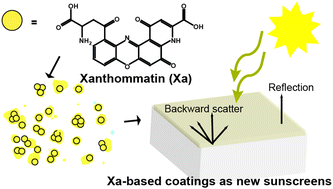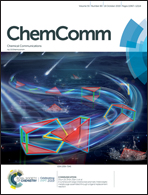A bioinspired, photostable UV-filter that protects mammalian cells against UV-induced cellular damage†
Abstract
While commercially available suncare products are effective at absorbing ultraviolet (UV)-light, recent studies indicate systemic toxicities associated with many traditional chemical and physical UV-filters. We demonstrate the application of xanthommatin, a biochrome present in arthropods and cephalopods, as an alternative chemical UV-filter that is cytocompatible while maintaining its photostability and photoprotective properties.



 Please wait while we load your content...
Please wait while we load your content...
